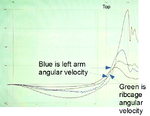I see many many golf tutorials online talking about the importance of rotating and firing the hips at the start of a downswing. I believe this has become a very desirable attribute because of guys like Dustin Johnson who get crazily open on their downswing and follow through. They say that it increases speed, brings the club on an inside path and keeps the face square.
Is there any very good or pro golfers around that don't really care about a huge hip turn? I'm no expert but I think that so long as you transfer your weight correctly, extend your arms straight turn the torso and bring your shoulder under the throat you will make the room enough to naturally swing down on an inside path. Initiating the downswing by firing the hips is just another thing to think about and an unnatural movement. The hip rotation is just exchangeable for forearm rotation through the downswing and follow through and they are just two different ways of going about things.
View attachment PXL_20210803_174310594~2_1280x720.mp4
Is there any very good or pro golfers around that don't really care about a huge hip turn? I'm no expert but I think that so long as you transfer your weight correctly, extend your arms straight turn the torso and bring your shoulder under the throat you will make the room enough to naturally swing down on an inside path. Initiating the downswing by firing the hips is just another thing to think about and an unnatural movement. The hip rotation is just exchangeable for forearm rotation through the downswing and follow through and they are just two different ways of going about things.
View attachment PXL_20210803_174310594~2_1280x720.mp4











